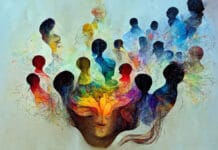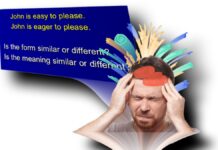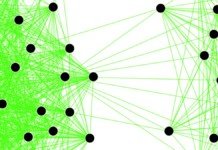Acculturation refers to how individuals or groups adapt to a new culture when they come into sustained contact with it. In language learning, acculturation theory suggests that social and cultural adaptation is crucial in acquiring a second language (L2).
This theory was developed by John Schumann (1978), who argued that the degree to which a learner integrates into a new cultural and social environment directly affects their success in learning the language of that culture.
Schumann’s Acculturation Model is based on the idea that second language acquisition (SLA) is a form of cultural adaptation. He identified two primary types of acculturation:
Social Distance
Social distance refers to the relationship between the learner’s native and target language (TL) communities. The closer the relationship, the greater the chances of successful language acquisition.
Factors influencing social distance:
- Dominance: Is the learner’s culture politically/economically dominant, subordinate, or equal to the target culture?
- Integration: Does the learner’s community mix well with the target-language community, or do they remain separate?
- Size of community: Are there many people from the learner’s background in the new environment, leading to less need for integration?
- Attitude towards the target language group: Are interactions positive or negative?
- Intended length of residence: Is the learner staying long-term or only temporarily?
- Cultural similarities: How different are the two cultures?
The less social distance between the learner and the target language group, the better the chances of acquiring the language naturally.
Psychological Distance
Psychological distance refers to the individual’s emotional and personal attitude towards learning a new language and culture. Even if the social distance is minimal, psychological factors can be a barrier.
Factors influencing psychological distance:
- Motivation: Is the learner instrumentally motivated (learning for a job, exams) or integratively motivated (wanting to be part of the culture)?
- Language shock: Does the new language feel overwhelming?
- Culture shock: Is adapting to the new culture stressful?
- Ego permeability: Is the learner open to adopting new cultural traits, or do they feel threatened?
- Attitude towards the TL community: Does the learner feel welcomed or alienated?
The more comfortable and motivated learners feel, the better their language acquisition.

Stages of Acculturation
Learners generally go through four stages in the acculturation process:
Euphoria Stage (Honeymoon Phase)
- The learner is excited and curious about the new culture.
- They may be highly motivated to learn the language.
- However, learning is still surface-level.
Culture Shock Stage
- The learner begins to feel overwhelmed by differences in culture.
- Frustration, confusion, and even resistance to the new language may appear.
- Language learning slows down because of stress.
Gradual Adjustment Stage
- The learner starts to understand and accept cultural differences.
- They feel less isolated and begin using the language more naturally.
- Motivation improves as they gain confidence.
Adaptation and Integration Stage
- The learner fully integrates into the new culture and language.
- They can comfortably use the language in social and professional settings.
- Fluency and confidence increase.
A learner must go through these stages, but proper support can make the process smoother and enhance language acquisition.
Implications for Language Learning
Schumann’s Acculturation Model has several important implications for teaching and learning a second language:
Create Opportunities for Social Interaction
Since social integration plays a key role, teachers and language learners should seek real-life communication with native speakers. For example:
- Encourage cultural immersion (living with native speakers, travelling, or engaging in community activities).
- Use authentic materials (TV shows, books, conversations with native speakers).
- Create interactive learning experiences (language partners, study groups, cultural events).
Address Emotional and Psychological Barriers
Teachers and learners should focus on reducing psychological distance by:
- Providing emotional support to deal with culture shock.
- Encouraging a growth mindset (mistakes are part of learning!).
- Fostering motivation through real-world goals (e.g., making friends, getting a job).
Balance Formal Learning and Natural Exposure
- Classroom learning alone is not enough—learners need real social interactions.
- Grammar and vocabulary drills should be complemented with meaningful conversations.
- Encourage learners to integrate into the target culture (e.g., through cultural clubs, online communities, and exchange programmes).
Understand That Language Acquisition is a Gradual Process
- Learners should not feel discouraged if fluency takes time.
- Recognising that acculturation is a process helps reduce frustration.
- Learning a language is not just about memorising words but about engaging with a culture.
Criticism of the Acculturation Model
While Schumann’s theory is valuable, it has some limitations:
- Too much emphasis on social factors – Some learners succeed without full cultural integration.
- Does not explain individual differences – Why do some learners thrive despite high social distance?
- Overlooks cognitive aspects – The brain’s role in processing language is not fully addressed.
- Ignores age and learning style – Not all learners adapt similarly.
Despite these criticisms, the model remains influential in second-language learning, especially for learners who are in immersion environments.
Schumann’s Acculturation Model highlights how social and psychological factors impact language learning. The closer learners integrate with the target culture, the more natural their language acquisition becomes. By reducing social and psychological barriers, language learners can accelerate their learning process and become more fluent.





























